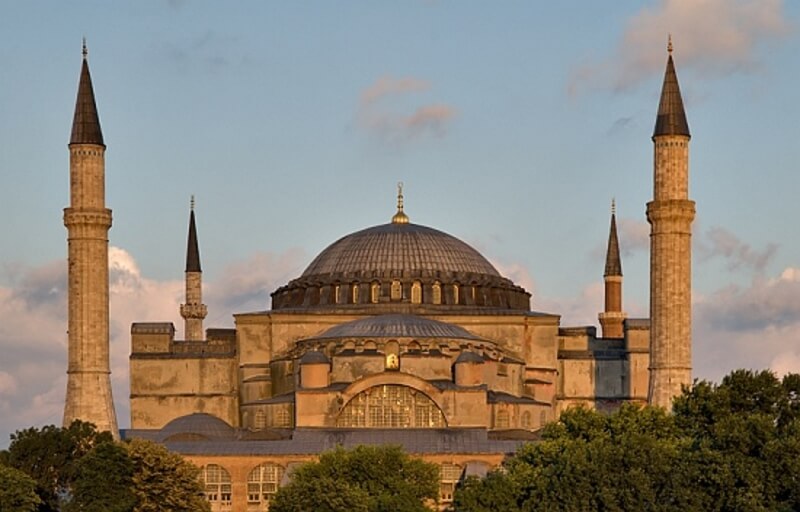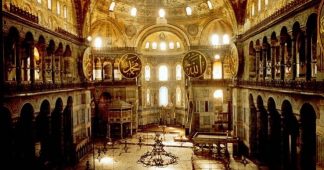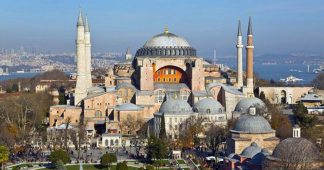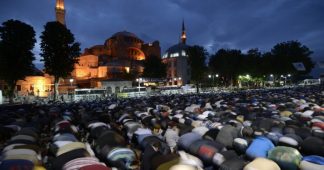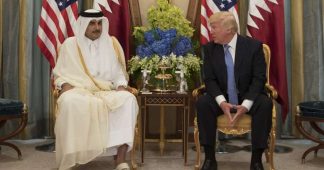MELİH USLU
December 10 2018
The first Hagia Sophia was built in 360 AD with a basilica layout and architectural features. In 405, Hagia Sophia was rebuilt after it was burnt down during an uprising and was reopened in 415. The monument today is the third Hagia Sophia built on the same ground, according to records. Justinian (482-565), perhaps one of the greatest rulers of the Eastern Roman Empire, appeared on the stage of history here. Nearly 30,000 people lost their lives during an uprising in Istanbul in 532. As a result of this incident, the people suffered greatly. Justinian had to do something unprecedented in order to distract people from their thoughts, memories and to redirect their efforts.
Fastest-built church
Justinian assigned two prominent scientists of the period, Isidoros and Anthemios, to build Hagia Sophia. There were about 100 masters or architects under their command. Hagia Sophia gained the “fastest-built church” title within five years and 10 months. The emperor had to use ready materials for fast progress, so he had material brought to Istanbul from temples, marble and stone quarries from all across Anatolia. The material came from temples in Ephesus in İzmir, from Aspendos and from Baalbek in Lebanon. The works of numerous Anatolian civilizations were brought to Istanbul with these materials. This way, Justinian both unified the Eastern Roman Empire in Hagia Sophia and brought the elements of civilization to Hagia Sophia which had remained within the borders of the Eastern Roman Empire until that time. In summary, a new temple for humanity was built in Hagia Sophia. He had the greatest temple built, which has stood for centuries.
Read more at http://www.hurriyetdailynews.com/a-symbol-of-civilizations-hagia-sophia-139570
